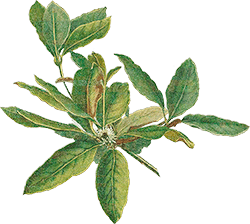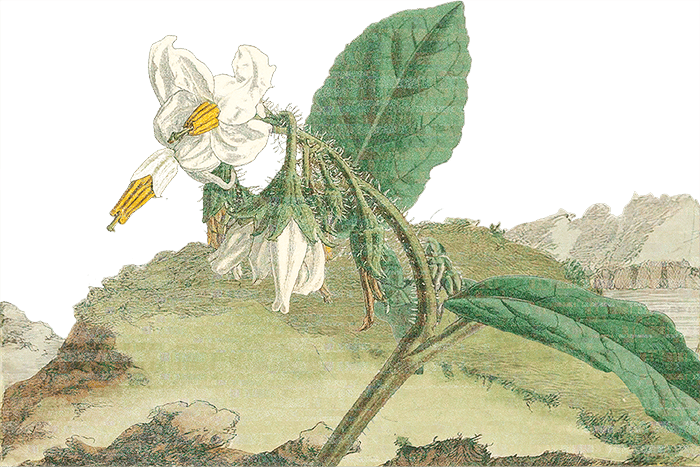On today’s show we learn about the Graceful Spiderhead, a critically endangered flowering shrub native to the southern tip of the African continent, in the Western Cape Province of South Africa.
Rough Transcript
Intro 00:05
Welcome to Bad at Goodbyes.
On today’s show we consider the Graceful Spiderhead
Species Information 02:05
The Graceful Spiderhead is a critically endangered flowering shrub native to the southern tip of the African continent, in the Western Cape Province of South Africa.
Description
Graceful Spiderhead is a prostrate shrub, with branches that trail along the ground, spreading horizontally rather than growing upward. Prostrate simply means a plant that hugs the ground with branches that spread out sideways, often lying on the ground itself or growing just above it. This is an adaptation to harsh habitat conditions: In exposed environments, growing close to the ground helps the plant avoid damage from strong winds. And in areas with poor soil, spreading horizontally can allow the plant to access nutrients and water over a wider area.
And so the Graceful Spiderhead’s branches are thin, long, numerous and dispersed, creating a kind of grassy appearance. The branches are covered in fine hairs and they have feathery leaves that are divided into three parts at the tip, kind of like a trident shape.
The shrub has remarkable flowers that bloom at the end of the branches. Each flower is roughly 1-2 inches in diameter and sits on its own stem, held by small, purple, pointed, petal-like structures called bracts.
Reproduction
The bisexual flowers, which bloom from July to October, lend the spiderhead its common name, they possess a spider-like shape, with long, protruding styles, which extend outward from the center of the flower like spider legs.
Let’s unpack a few of those terms - bisexual flowers, just means that both the female and male reproductive organs are present in a single flower. The female reproductive organ, called the pistil is comprised of the ovary which holds the egg cells; the style, which is a tube that leads to the ovaries and the stigma which is at the tip of the style. For fertilization to occur pollen enters the stigma, travels down the style and into the ovary.
In the case of the Graceful Spiderhead, the styles are long and fan outward like a tangle of pink twine, looking to me a bit like a sparkler, like a 4th of July sparkler, frozen in time.
The Graceful Spiderhead is pollinated by insects, likely bees by and/or beetles.
Once pollinated, the flowers develop into small, nut-like fruits. These fruits mature over a period of about two months, drying out and splitting open to release small dark brown seeds. The seeds are dispersed ants. This is really cool. The ants are attracted to a nutrient-rich appendage on the seed called an elaiosome. Ants carry the seeds to their nests, for their larval young to consume the elaiosome, discarding the remaining seed underground. This provides the seed with a safe, protected environment for germination, away from fire and seed predators. And also like already buried in the soil
The reproductive cycle of Graceful Spiderhead is closely tied to the fire regime of its habitat. The intense heat of an above-ground fire stimulates the germination of the buried seeds. The seeds can remain viable in the soil for several years, waiting for fire to trigger initial growth. With seedlings sprouting into an environment relatively free of competition, other plants having perished in the fire.
Additionally, mature Graceful Spierhead can resprout from its underground roots after fire. So adult plants that survive fire can regenerate quickly, again resprouting into an environment with little other competition.
The Graceful Spiderhead can live up to 100 years old
In The Dream
————
In the dream, a moonlight, a waning moon, near full and little lonesome. Solitary, forever working the third shift, perhaps the moon is always a little lonesome. But here in the dream, the moon is not my moon. Like not my human experience of moon, like not my romantic midnight, its not like the moon over the east river, from a rooftop at Oliver’s party. In this dream, it is the vegetal sense of moon, the shadow of moon, the cycle of moon, walking its well-trod path across the night for green growing decades, for a century, across flowerings and fires and new growth, reliable, steady in the tumult, in the new hot, in the unfamiliar changings. A held pact among broken promises, in the dream.
————
Habitat
The Graceful Spiderhead is native to the southwestern Cape Floristic Region of South Africa, roughly 30 miles northeast of Cape Town. This is a fynbos biome, a unique shrubland with high biodiversity. The Graceful Spiderhead is found in lowland areas on alluvial sands and granite slopes.
The fynbos biome is dominated by dense and shrubby evergreen vegetation, like proteas, ericas, and restios. It is a fire-prone ecosystem, with natural fires occurring every 10-15 years. These fires play a crucial role in maintaining the fynbos, stimulating seed germination and promoting new growth.
This is a Mediterranean climate, with hot, dry summers and relatively cool, wet winters. Summer temperatures can reach highs in the upper 80s°F, while winter temperatures can drop into the 40s °F. The average annual rainfall is around 30 inches, with most of the rain falling during the winter months.
The Graceful Spiderhead shares its habitat with Cape Dwarf Chameleon, Victorin’s Warbler, Fire Heath, ants, Klipspringer, Cape honey bee, Conebush, Bridal Heath, Watsonias, Rock Hyrax, dung beetle, Geometric tortoise, Large carpenter bee, Cape Grysbok, King Protea, Wild geranium, Cape Rockjumper, Orange-breasted Sunbird and many many more.
Threats
The primary threat to the Graceful Spiderhead is the ongoing loss of its fynbos habitat. Urban expansion, agriculture, and the development of infrastructure have fragmented and destroyed vast swathes of its native habitat. The remaining populations are confined to small, isolated patches, making them even more susceptible to other threats.
Human introduced invasive plant species, such as hakea and pines, pose a significant threat, outcompeting native plants for resources, and altering the soil conditions and ecosystem composition of the fynbos.
Though fire is a natural essential component of the fynbos ecosystem, altered fire regimes are having a detrimental effect on The Graceful Spiderhead. Too frequent fires prevent the plants from reaching maturity and reproducing. While fire suppression leads to the encroachment of dense vegetation, competing with the Spiderhead for resources.
Relatedly human-induced climate change, including increased temperatures and altered rainfall patterns, are exacerbating these threats, specifically increasing the frequency and severity of wildfires in the Graceful Spiderhead’s habitat.
Conservation
Though the remaining population grows in a protected area, the Briers Louw Nature Reserve, the Graceful Spiderhead has been considered critically endangered on the IUCN Red List since 2020 and its population is currently in decline.
Our most recent counts estimate that less than 20 Graceful Spiderhead remain in the wild.
Citations 16:55
Protea Atlas – https://www.proteaatlas.org.za/spider3.htm
Flora Capensis, Vol 5, page 502 – https://plants.jstor.org/stable/10.5555/al.ap.flora.floc012825
“Ant benefits in a seed dispersal mutualism” Oecologia vol 146 no. 1 – https://doi.org/10.1007/s00442-005-0154-9
South African National Biodiversity institute – https://pza.sanbi.org/vegetation/fynbos-biome
IUCN – https://www.iucnredlist.org/species/113238699/185533437
Wikipedia – https://en.wikipedia.org/wiki/Serruria_gracilis
Music 18:08
Pledge 26:22
I honor the lifeforce of the Graceful Spiderhead. I will commit its name to my record. I am grateful to have shared time on our planet with this being. I lament the ways in which I and my species have harmed and diminished this species.
And so, in the name of the Graceful Spiderhead I pledge to reduce my consumption. And my carbon footprint. And curb my wastefulness. I pledge to acknowledge and attempt to address the costs of my actions and inactions. And I pledge to resist the harm of plant or animal kin or their habitat, by individuals, corporations, and governments.
I pledge my song to the witness and memory of all life, to a broad celebration of biodiversity, and to the total liberation of all beings.

